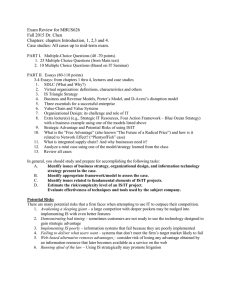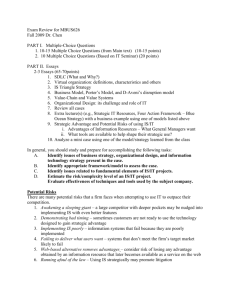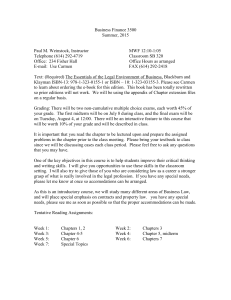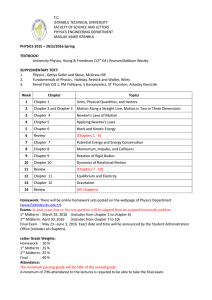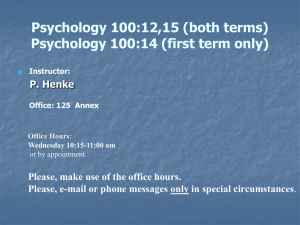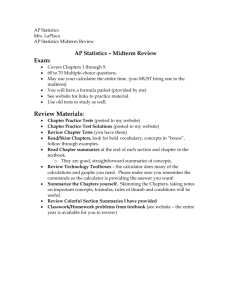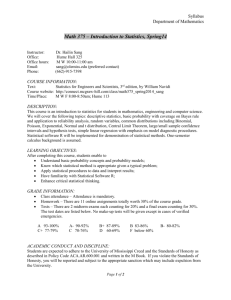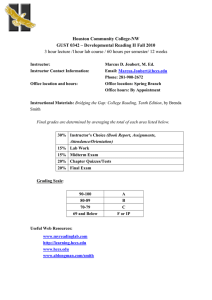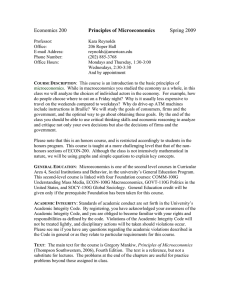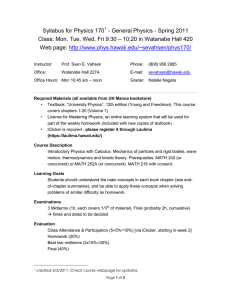mbus626_Exam_I_Review
advertisement
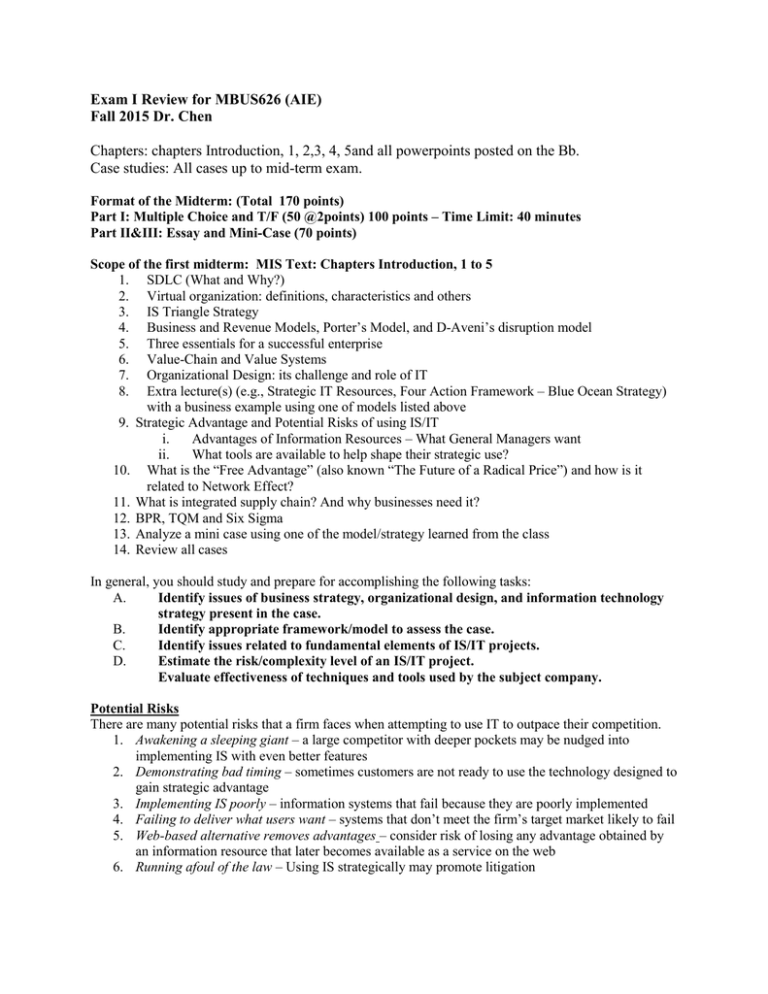
Exam I Review for MBUS626 (AIE) Fall 2015 Dr. Chen Chapters: chapters Introduction, 1, 2,3, 4, 5and all powerpoints posted on the Bb. Case studies: All cases up to mid-term exam. Format of the Midterm: (Total 170 points) Part I: Multiple Choice and T/F (50 @2points) 100 points – Time Limit: 40 minutes Part II&III: Essay and Mini-Case (70 points) Scope of the first midterm: MIS Text: Chapters Introduction, 1 to 5 1. SDLC (What and Why?) 2. Virtual organization: definitions, characteristics and others 3. IS Triangle Strategy 4. Business and Revenue Models, Porter’s Model, and D-Aveni’s disruption model 5. Three essentials for a successful enterprise 6. Value-Chain and Value Systems 7. Organizational Design: its challenge and role of IT 8. Extra lecture(s) (e.g., Strategic IT Resources, Four Action Framework – Blue Ocean Strategy) with a business example using one of models listed above 9. Strategic Advantage and Potential Risks of using IS/IT i. Advantages of Information Resources – What General Managers want ii. What tools are available to help shape their strategic use? 10. What is the “Free Advantage” (also known “The Future of a Radical Price”) and how is it related to Network Effect? 11. What is integrated supply chain? And why businesses need it? 12. BPR, TQM and Six Sigma 13. Analyze a mini case using one of the model/strategy learned from the class 14. Review all cases In general, you should study and prepare for accomplishing the following tasks: A. Identify issues of business strategy, organizational design, and information technology strategy present in the case. B. Identify appropriate framework/model to assess the case. C. Identify issues related to fundamental elements of IS/IT projects. D. Estimate the risk/complexity level of an IS/IT project. Evaluate effectiveness of techniques and tools used by the subject company. Potential Risks There are many potential risks that a firm faces when attempting to use IT to outpace their competition. 1. Awakening a sleeping giant – a large competitor with deeper pockets may be nudged into implementing IS with even better features 2. Demonstrating bad timing – sometimes customers are not ready to use the technology designed to gain strategic advantage 3. Implementing IS poorly – information systems that fail because they are poorly implemented 4. Failing to deliver what users want – systems that don’t meet the firm’s target market likely to fail 5. Web-based alternative removes advantages – consider risk of losing any advantage obtained by an information resource that later becomes available as a service on the web 6. Running afoul of the law – Using IS strategically may promote litigation
